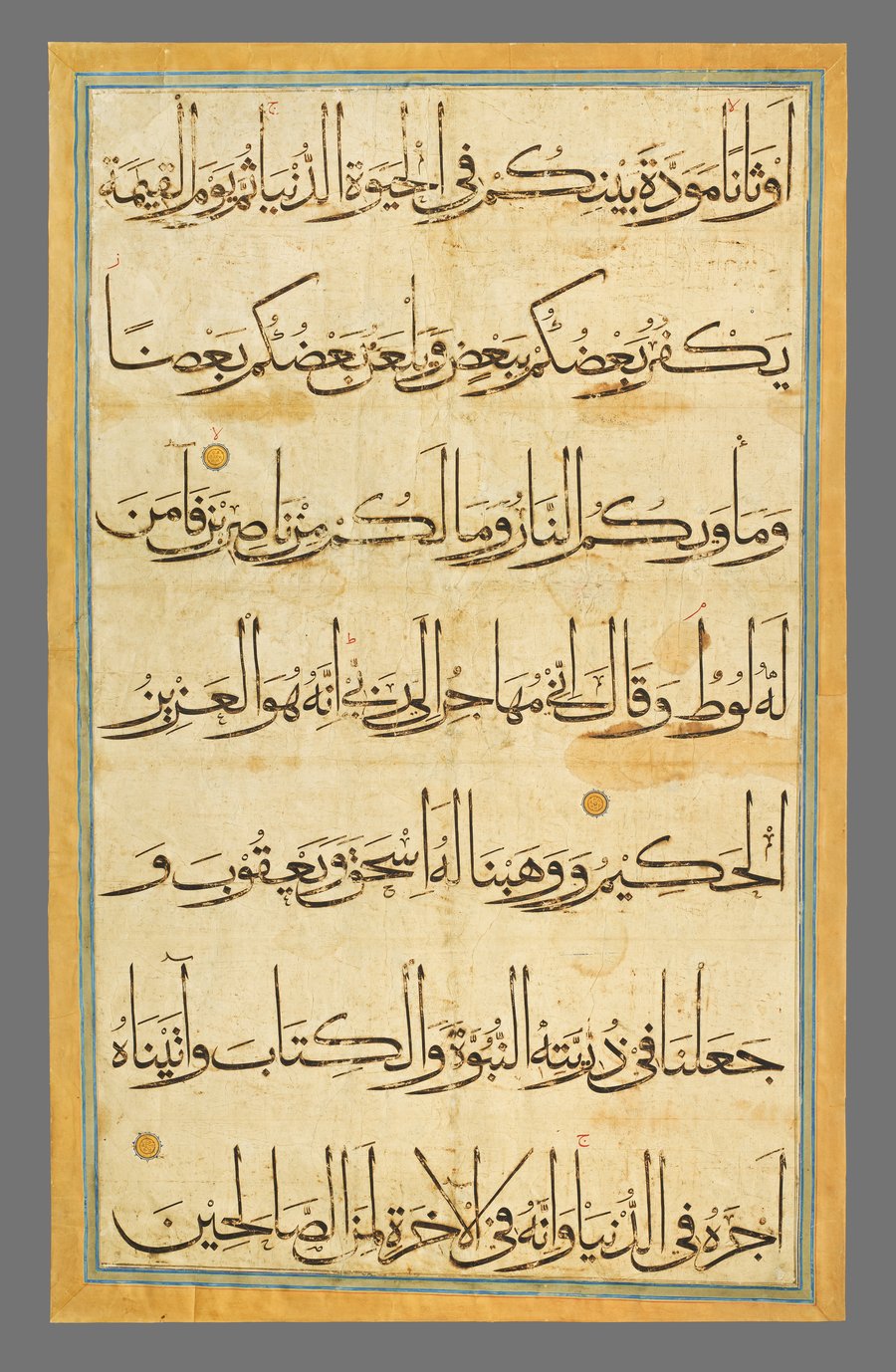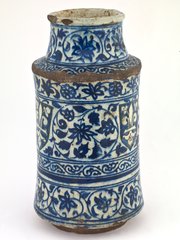
Folio from a monumental Qur'an
Museum of Islamic Art
- Title:
- Folio from a monumental Qur'an
- Calligrapher:
- Umar Al Aqta
- Production place:
- Samarqand
- Date:
- 1400 - 1430
- Period:
- Timurid
- Title:
- Folio from a monumental Qur'an
- Calligrapher:
- Umar Al Aqta
- Production place:
- Samarqand
- Date:
- 1400 - 1430
- Period:
- Timurid
- Material:
- Paper, Ink, Gold
- Technique:
- Calligraphy, Illumination
- Dimensions:
- 177 × 111.5 cm
Written in elegant muhaqqaq script, this page is from the largest medieval Qur'an ever made, the so-called Baysunghur Qur'an. It would have required 1600 pages in total and 2700 square meters of paper to complete this Qur'an. Traditionally ascribed to the patronage of Timurid ruler Baysunghur, it is more likely to have been produced for Timur himself (r. 771-807 AH / 1370-1405 CE).
The story is that it was produced by a one-armed calligrapher, Umar-e Aqta, who also spent years producing a miniature Qur'an that would fit into a ring. When he presented this proudly to Timur, the great ruler thought the small size unworthy of the Qur'an. Timur was also known for monumental architectural plans, thus miniature size might not have striken the ruler interest. Not turned down by this initial cold reaction, the calligrapher then set about producing the largest Qur'an manuscript ever seen and presented it to Timur, who this time granted the appreciation sought by the artist. A Qur'an stand in carved stone large enough to hold the manuscript was commissioned by Ulugh Beg, a grandson of Timur, and is still standing in the courtyard of the Bibi Khanum Mosque in Samarkand, where Timur established his capital.




